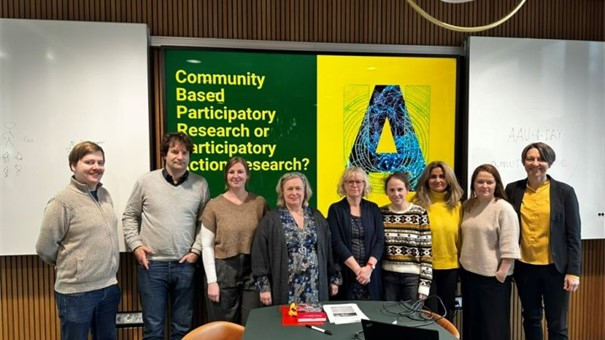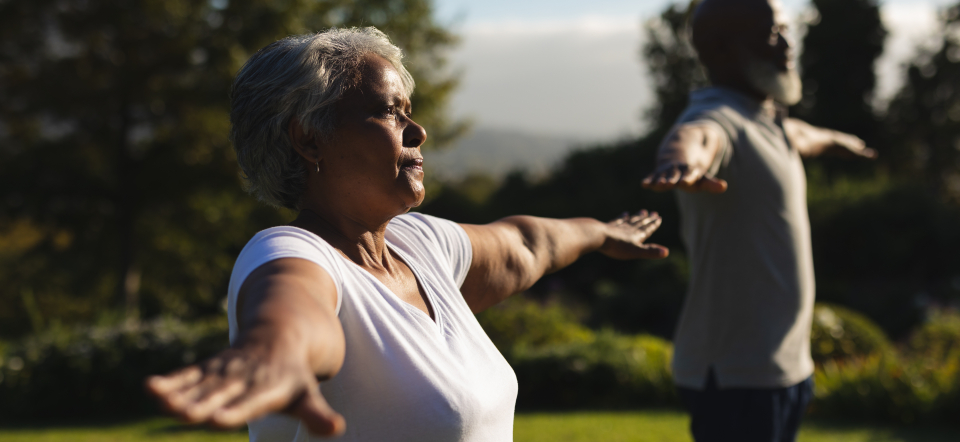Within the over-60 population in the Nordic countries, those with a migrant and refugee background are most at risk of both physical and mental health problems. Many elderly immigrants live in poverty and struggle with isolation and social exclusion. At the same time, Nordic welfare organisations are not used to supporting this group of elderly people. This is a new and so far, unexplored part of the challenge of an ageing population demographic.
In response to the challenge, the NordForsk-funded project Healthy communities in ageing societies –participatory research with elderly immigrants and refugees living in a Nordic society (HEALTHCOM) seeks to find and create methods for physical activity among elderly immigrants through participatory research in Sweden, Finland, Norway and Denmark.
“We all know that physical activity is preventive and promotes health in many ways. Exercising together is also community building and there is an integration factor in it. We are trying to find special methods to engage this population and to explore the barriers that hinder them from engaging in physical activity”, says Margareta Rämgård, Associate Professor at Malmö University and leader of the HEALTHCOM sub-project in Sweden.
Welfare-building research
Similar methods of engaging older immigrants in physical activity are common in Canada and Australia, but have not been developed in the Nordic countries to any great extent before.
“In the context of welfare research, our Nordic perspective is very interesting. We need to create our own model for such methods that is adapted to our Nordic welfare societies. This is about more than just increasing physical activity. It's about improving the situation of immigrants and refugees in the Nordic region. And it's about how we can prevent health problems in a group that, if we're being honest, will consume a lot of healthcare resources in the future otherwise. So, our project both promotes health and builds welfare”, says Rämgård.
For the researchers working on the project, the process is educational in terms of developing knowledge about both collaboration and implementation in society.
“Working like this is not without conflict. There are many differences of opinion and conflicts that come to the surface when choosing what activities and initiatives to do. As a researcher, you have to be able to deal with that and learn how to build relationships and resolve conflicts. It's a kind of emotional and relational knowledge that develops in the researchers themselves. That's why it's very important that young researchers get to work on these more complex projects together with more senior researchers as support”, says Rämgård.

Rämgård sees trust as the most important factor in integrating and promoting the health prevention of elderly migrants and refugees.
“These people have experiences of war and authoritarian regimes which must be taken into account when they are in contact with authorities, organisations and health services. It is difficult for them to trust the Nordic societies and to build trust they need a local context. Trust has to be built in a way that is quite resource demanding in the beginning. But the good thing is that implementation takes place directly in the research processes, so the effects of our research are visible in society right away. In Denmark, for example, we asked a group of older men from the suburbs to suggest activities they would like to do, and this led to joint swimming sessions, badminton games and walks, and though that improved mental health”, she says.
Yoga and walking good for the health
In Sweden, a network of women from the Middle East who do not speak Swedish are offered the opportunity to practice yoga. Afterwards, in writing workshops organised together with local libraries, they get to write about their progress and the barriers that prevent them from engaging in physical activity that they feel exist in society. In Norway, a group of older women are also offered the opportunity to practice yoga in co-operation with local religious associations. The project crosses both generational and political boundaries.
“In Norway, we work with Afghan women across generations. Younger women help the older ones with the physical activity, which creates social bonds. In Finland, we work with a Russian-speaking migrant group, made up of elderly men and women from both Ukraine and Russia. You might think, how is that going? But we've seen that it works well for them to socialise and exercise together”, says Margareta Rämgård.
The activity methods that have worked best for elderly immigrants so far are yoga, swimming and walking.
“The social aspect is important for these people because they are outside the labour market and other social contexts. But above all, we see a strong link between what we do and improved mental health. Many of these people are dealing with trauma. I think the reason why yoga has been so successful with these elderly people is because yoga is very much about inner and mental processes. There is also something about walking that is very good for the psyche”, Rämgård says.
Participatory research
The HEALTHCOM project does participatory research to reach their results. This approach takes a broader view of knowledge than traditional research, drawing not only on evidence-based knowledge but also on experience-based knowledge.
An important factor is that the project is implemented while the research is being conducted, so practice determines how the research is conducted. Those who pose a problem to be solved are involved in the research process and may decide on the purpose and method or parts of these.
The focus is on the process and the aim of the research is to promote involvement, dialogue and reflection and create positive social change. Therefore, participatory action research is often qualitative, like all four HEALTHCOM sub-projects. But participatory research can also be quantitative.



